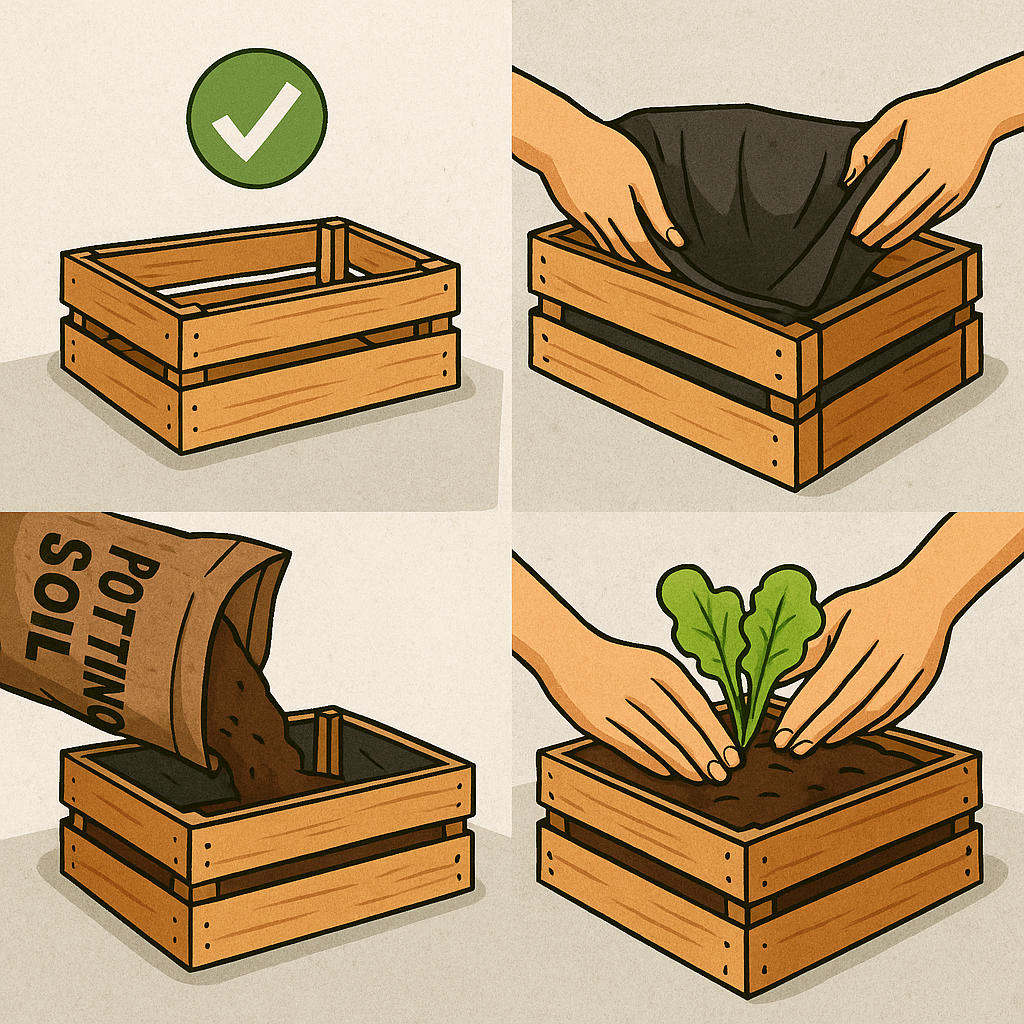Wooden crates are an excellent, eco-friendly option for home gardening. Whether you’re short on space or simply love rustic charm, wooden crates make great containers for growing herbs, flowers, and vegetables. In this guide, you’ll learn how to turn wooden crates into beautiful and practical planters that help your garden thrive.
Keyphrase in introduction: Wooden crates for home gardening
Why Use Wooden Crates in Gardening?
- Sustainability: Reusing wooden crates helps reduce waste and supports eco-conscious living.
- Affordability: Often available for free or at low cost from local stores.
- Style: Adds a rustic, decorative look to patios, balconies, and even indoor gardens.
- Mobility: Easy to move around depending on sunlight and weather conditions.
Choosing the Right Wooden Crate
Look for crates that are:
- Untreated or food-safe (to avoid chemicals seeping into the soil)
- Sturdy and in good condition (no major cracks or rotting)
- Deep enough to support root growth (at least 20–30 cm for most plants)
Preparing the Crate
- Clean and Sand: Wash the crate and smooth out any splinters.
- Add Liner: Staple a plastic liner or landscape fabric inside to protect the wood and retain moisture.
- Drill Drainage Holes: Ensure excess water can escape to prevent root rot.
- Optional: Apply a non-toxic sealant for weather protection.
Best Plants for Wooden Crates
- Herbs: Basil, thyme, mint, parsley
- Leafy greens: Lettuce, spinach, arugula
- Flowers: Marigolds, petunias, lavender
- Compact vegetables: Cherry tomatoes, radishes, peppers
Potting and Planting Steps
- Add gravel or broken clay pieces for drainage.
- Fill with a high-quality potting mix.
- Plant seeds or seedlings according to spacing requirements.
- Water gently but thoroughly.
Placement Tips
- Place crates where they get at least 6 hours of sunlight daily.
- Use plant stands or bricks to elevate the crates and improve drainage.
- Rotate crates regularly for even sun exposure.
Maintenance and Longevity
- Watering: Check soil moisture daily—wooden crates may dry out faster.
- Fertilizing: Use organic liquid fertilizer every 2–3 weeks.
- Pest Control: Monitor for insects and use natural repellents if needed.
- Winter Storage: Store crates indoors or cover with waterproof material to extend their life.

Creative Ideas
- Stack multiple crates for vertical gardening.
- Paint or stencil the crates for decorative appeal.
- Label each crate with the plant name using chalk or wooden signs.
For more creative vertical garden ideas, check out our article on Hanging Gardens with Recycled Materials.
Final Thoughts
Wooden crates offer a perfect blend of practicality and aesthetics for any home gardener. With minimal effort and cost, you can create a unique, functional garden space that fits both indoors and outdoors.
You can purchase untreated wooden crates ideal for gardening on Home Depot’s website.
